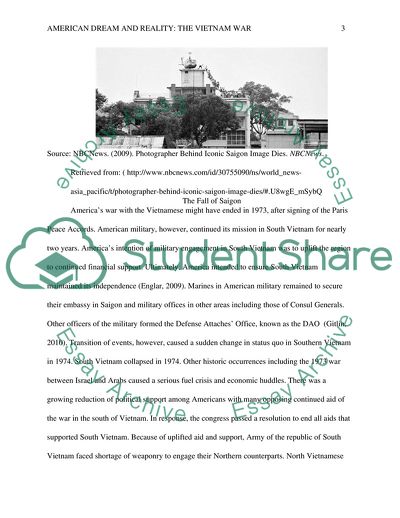Cite this document
(American Dream and Reality: The Vietnam War Literature review Example | Topics and Well Written Essays - 2000 words, n.d.)
American Dream and Reality: The Vietnam War Literature review Example | Topics and Well Written Essays - 2000 words. https://studentshare.org/history/1834951-america-dream-and-reality-the-vietnam-war
American Dream and Reality: The Vietnam War Literature review Example | Topics and Well Written Essays - 2000 words. https://studentshare.org/history/1834951-america-dream-and-reality-the-vietnam-war
(American Dream and Reality: The Vietnam War Literature Review Example | Topics and Well Written Essays - 2000 Words)
American Dream and Reality: The Vietnam War Literature Review Example | Topics and Well Written Essays - 2000 Words. https://studentshare.org/history/1834951-america-dream-and-reality-the-vietnam-war.
American Dream and Reality: The Vietnam War Literature Review Example | Topics and Well Written Essays - 2000 Words. https://studentshare.org/history/1834951-america-dream-and-reality-the-vietnam-war.
“American Dream and Reality: The Vietnam War Literature Review Example | Topics and Well Written Essays - 2000 Words”. https://studentshare.org/history/1834951-america-dream-and-reality-the-vietnam-war.


